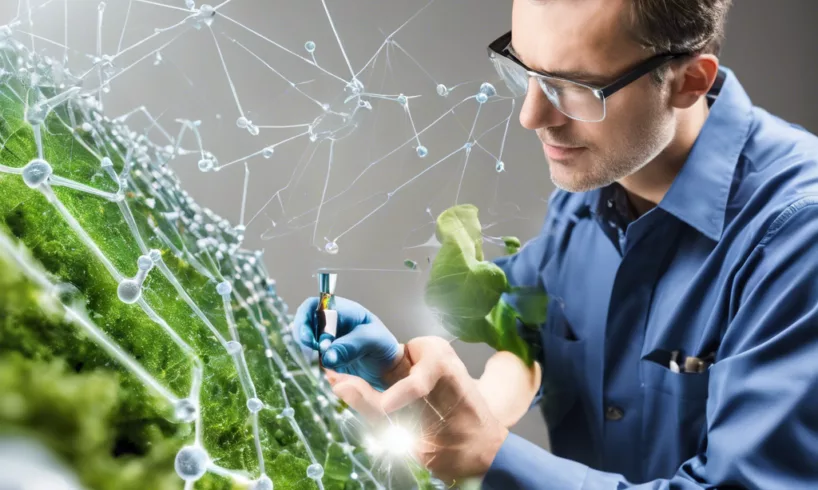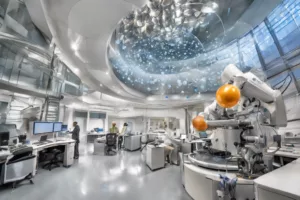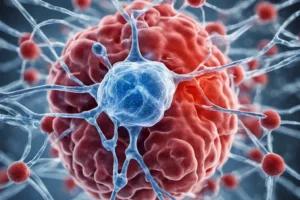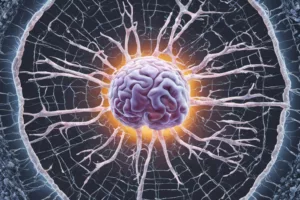
Introduction: Understanding Nanotechnology and Sustainability
Nanotechnology is manipulating matter on an atomic, molecular, and supramolecular scale. It involves designing, synthesizing, characterizing, and applying materials and devices with unique properties at the nanoscale. The prefix “nano” refers to one billionth of a meter, about the size of a few atoms or molecules. Nanotechnology can revolutionize various fields, including medicine, electronics, energy, and environmental sustainability.
Sustainability is the practice of using resources to meet the needs of the present generation without compromising the ability of future generations to meet their own needs. It involves balancing economic, social, and environmental factors to ensure long-term well-being. In today's world, sustainability has become increasingly important due to the growing population, limited resources, and the impact of human activities on the planet.
Nanotechnology can contribute to sustainable development by providing innovative solutions to pressing global challenges. It offers the potential to improve energy efficiency, reduce waste, enhance water purification, increase crop yields, and mitigate the effects of climate change. By harnessing the unique properties of nanomaterials, scientists and engineers can develop sustainable technologies that have a minimal impact on the environment and promote the well-being of society.
How Nanotechnology Can Help Achieve Sustainable Development Goals
The United Nations Sustainable Development Goals (SDGs) are 17 goals adopted by all UN member states in 2015 to address global challenges such as poverty, inequality, climate change, and environmental degradation. Nanotechnology has the potential to contribute to the achievement of these goals by providing innovative solutions that are more efficient, cost-effective, and environmentally friendly.
For example, nanotechnology can help achieve SDG 7: Affordable and Clean Energy. By improving energy efficiency and storage, nanotechnology can reduce the reliance on fossil fuels and promote using renewable energy sources such as solar and wind power. Nanomaterials can be used to develop more efficient solar cells, lightweight batteries, and fuel cells that can store and convert energy more effectively. These advancements can help increase access to clean and affordable energy, particularly in developing countries.
Nanotechnology can also contribute to SDG 2: Zero Hunger by improving agricultural practices and increasing crop yields. By developing nanosensors and nanofertilizers, scientists can monitor soil conditions and deliver nutrients to plants more effectively. This can help reduce the use of harmful pesticides and fertilizers, minimize water consumption, and increase the productivity of agricultural systems. Additionally, nanotechnology can enhance the nutritional value of crops by fortifying them with essential vitamins and minerals.
Nanotechnology and Energy: A Sustainable Solution for the Future
The current energy sources, such as fossil fuels, have significant limitations regarding their environmental impact and finite availability. Nanotechnology offers promising solutions to improve energy efficiency, storage, and generation, contributing to a more sustainable energy future.
One of the critical areas where nanotechnology can make a significant impact is in improving energy efficiency. By incorporating nanomaterials into various devices and systems, such as lighting, insulation, and electronics, energy consumption can be reduced. For example, nanocoatings can be applied to windows to enhance their insulation properties, reducing the need for heating and cooling. Nanoparticles can also be used to improve the efficiency of LED lights, making them more energy-efficient than traditional incandescent bulbs.
Nanotechnology also holds great potential for energy storage. Current battery technologies have limitations in capacity, charging time, and lifespan. By utilizing nanomaterials, researchers can develop batteries with higher energy density, faster-charging rates, and longer lifespans. For example, nanoscale silicon anodes can increase the energy density of lithium-ion batteries, while nanowires can improve their charging rates. These advancements in energy storage can enable the widespread adoption of renewable energy sources, such as solar and wind power, by providing a reliable and efficient means of storing excess energy.
Furthermore, nanotechnology can contribute to the development of renewable energy sources. For instance, nanomaterials can improve solar cells' efficiency by enhancing light absorption and charge transport. Nanoparticles can also be incorporated into fuel cells to increase efficiency and reduce cost. Additionally, nanotechnology can enable hydrogen production from renewable sources, such as water and biomass, through processes like photocatalysis and electrocatalysis. This can provide a sustainable alternative to fossil fuels for transportation and power generation.
Nanotechnology in Agriculture: Sustainable Farming Practices
Current agricultural practices have significant environmental impacts, including soil degradation, water pollution, and greenhouse gas emissions. Nanotechnology offers innovative solutions to improve crop yields, reduce the use of harmful pesticides, and promote sustainable farming practices.
One of the critical challenges in agriculture is the efficient delivery of nutrients to plants. Nanotechnology can address this challenge by developing nanosensors and nanofertilizers. Nanosensors can monitor soil conditions like moisture levels and nutrient concentrations in real time. This information can then be used to optimize the application of fertilizers, reducing waste and minimizing environmental pollution. Nanofertilizers, on the other hand, can deliver nutrients directly to the roots of plants, improving their uptake efficiency and reducing the need for excessive fertilizer application.
Nanotechnology can also help reduce the use of harmful pesticides in agriculture. By developing nanopesticides, scientists can target pests more effectively while minimizing the impact on beneficial organisms and the environment. Nanopesticides can be designed to release their active ingredients slowly, ensuring long-lasting protection against pests. Additionally, nanomaterials can be used to develop intelligent packaging materials that can detect and neutralize pathogens, extending the shelf life of agricultural products and reducing food waste.
Furthermore, nanotechnology can enhance the nutritional value of crops. By fortifying crops with essential vitamins and minerals, scientists can address nutrient deficiencies and improve the health of populations. Nanoparticles can encapsulate and deliver these nutrients to plants, ensuring their efficient uptake and utilization. This approach can be particularly beneficial in regions with limited access to nutritious food.
Nanotechnology in Water Treatment: A Cleaner and Greener Solution
Access to clean and safe water is a fundamental human right, yet millions worldwide still lack access to clean water sources. Current water treatment methods have efficiency, cost, and environmental impact limitations. Nanotechnology offers innovative solutions to improve water purification and desalination, making clean water more accessible and affordable.
One of the critical applications of nanotechnology in water treatment is developing nanomembranes. These membranes can selectively remove contaminants from water, such as bacteria, viruses, heavy metals, and organic pollutants. Scientists can design membranes with high permeability and selectivity by controlling nanomaterials' size, shape, and surface properties. This can significantly improve the efficiency of water treatment processes, reducing energy consumption and waste generation.
Nanotechnology can also enhance the efficiency of desalination processes. Desalination is the process of removing salt and other impurities from seawater or brackish water to produce freshwater. Current desalination technologies, such as reverse osmosis and distillation, are energy-intensive and expensive. By utilizing nanomaterials, researchers can develop more efficient and cost-effective desalination membranes. For example, graphene oxide membranes can provide high water permeability and salt rejection, making them promising candidates for desalination applications.
Furthermore, nanotechnology can help address water scarcity by developing innovative water harvesting and purification systems. Nanomaterials can be used to design self-cleaning surfaces that repel water and prevent the buildup of contaminants. This can reduce the need for frequent cleaning and maintenance, making water purification systems more efficient and cost-effective. Additionally, nanomaterials can be used to develop solar-powered water purification devices that can operate in remote areas without access to electricity.
Nanotechnology and Waste Management: Turning Trash into Treasure
Current waste management practices, such as landfilling and incineration, have significant environmental impacts, including releasing greenhouse gases and contaminating soil and water. Nanotechnology offers innovative solutions to reduce waste generation, improve recycling processes, and transform waste into valuable resources.
One of the critical challenges in waste management is the efficient separation and recycling of different materials. Nanotechnology can address this challenge by developing nanosensors and nanomaterials that can selectively detect and separate different types of waste. For example, nanosensors can detect and sort plastics based on their chemical composition, making recycling more efficient and cost-effective. Nanomaterials can also be used to develop catalysts to break down complex waste materials into more straightforward and more valuable components.
Nanotechnology can also help reduce waste generation by developing innovative packaging materials. By incorporating nanomaterials into packaging films and coatings, scientists can improve their barrier properties and extend the shelf life of products. This can reduce food waste and the need for excessive packaging materials. Additionally, nanomaterials can be used to develop innovative packaging that can detect and neutralize pathogens, ensuring the safety and quality of food products.
Furthermore, nanotechnology can enable the transformation of waste into valuable resources. For example, nanocatalysts can convert waste biomass into biofuels and other high-value chemicals. Nanomaterials can also be used to develop sensors that can detect and remove pollutants from wastewater, turning it into a valuable source of clean water and nutrients for agriculture. Additionally, nanotechnology can be used to develop nanoscale filters that can capture and recover valuable metals from electronic waste.
Nanotechnology in Transportation: Sustainable Mobility Solutions
The current transportation methods, such as gasoline-powered vehicles and airplanes, have significant environmental impacts, including air pollution, greenhouse gas emissions, and noise pollution. Nanotechnology offers innovative solutions to improve fuel efficiency, reduce emissions, and promote sustainable mobility.
One of the critical applications of nanotechnology in transportation is developing lightweight materials. Researchers can reduce their weight by incorporating nanomaterials, such as carbon nanotubes and graphene, into vehicle components without compromising strength and durability. This can significantly improve fuel efficiency and reduce emissions. For example, nanocomposites can be used to develop lightweight car bodies and aircraft wings, reducing their energy consumption and carbon footprint.
Nanotechnology can also improve the efficiency of combustion engines by developing nanocatalysts and nanofluids. Nanocatalysts can enhance the efficiency of catalytic converters, reducing the emissions of harmful pollutants, such as nitrogen oxides and carbon monoxide. Nanofluids, on the other hand, can improve the heat transfer properties of engine coolant, reducing the energy consumption and emissions of vehicles. Additionally, nanomaterials can be used to develop sensors that can detect and monitor engine performance, optimizing fuel consumption and reducing maintenance costs.
Furthermore, nanotechnology can enable the development of alternative energy sources for transportation. For example, nanomaterials can be used to improve the efficiency of fuel cells, making them a viable alternative to internal combustion engines. Nanomaterials can also be used to develop hydrogen storage materials, enabling the widespread adoption of hydrogen fuel cell vehicles. Additionally, nanotechnology can enhance the efficiency of solar cells and batteries, making electric vehicles more practical and affordable.
The Role of Nanotechnology in Green Buildings and Infrastructure
The current building and infrastructure practices have significant environmental impacts, including energy consumption, waste generation, and resource depletion. Nanotechnology offers innovative solutions to improve energy efficiency, reduce waste, and promote sustainable construction practices.
One of the critical applications of nanotechnology in green buildings is developing energy-efficient materials and coatings. Researchers can improve their thermal and optical properties by incorporating nanomaterials into building materials, such as concrete, glass, and insulation. For example, nanocoatings can be applied to windows to enhance their insulation properties, reducing the need for heating and cooling. Nanoparticles can also be added to concrete to improve its strength and durability, reducing the need for frequent repairs and replacements.
Nanotechnology can also improve the efficiency of energy generation and storage in buildings. For example, nanomaterials can be used to develop more efficient solar cells that can convert sunlight into electricity more effectively. Nanoparticles can also be incorporated into batteries and supercapacitors to improve energy density and charging rates. Additionally, nanomaterials can be used to develop bright windows that adjust their transparency and insulation properties based on external conditions, reducing the need for artificial lighting and heating.
Furthermore, nanotechnology can help reduce waste generation in construction. By developing nanosensors and nanomaterials, researchers can monitor the structural integrity of buildings in real-time and detect potential defects and failures. This can reduce the need for frequent inspections and repairs, minimizing waste and saving resources. Additionally, nanomaterials can be used to develop self-healing materials that can repair themselves when damaged, extending their lifespan and reducing the need for replacements.
Nanotechnology and Climate Change: Mitigating the Effects of Global Warming
Climate change is one of humanity's most significant challenges, significantly impacting ecosystems, economies, and human health. It is primarily caused by the emission of greenhouse gases, such as carbon dioxide and methane, from human activities, including burning fossil fuels and deforestation. Nanotechnology offers innovative solutions to mitigate the effects of global warming and promote climate resilience.
One of the critical applications of nanotechnology in climate change mitigation is developing carbon capture and storage (CCS) technologies. CCS involves capturing carbon dioxide emissions from power plants and industrial facilities and storing them underground or utilizing them for other purposes. Nanomaterials can be used to develop more efficient and cost-effective carbon capture materials and processes. For example, nanoscale metal-organic frameworks can selectively capture carbon dioxide from flue gases, reducing emissions and preventing their release into the atmosphere.
Nanotechnology can also contribute to developing renewable energy sources like solar and wind power. By improving the efficiency of solar cells and wind turbines, nanotechnology can increase energy generation capacity and reduce costs. For example, nanomaterials can enhance solar cells' light absorption and charge transport properties, making them more efficient than traditional silicon-based cells. Nanomaterials can also be used to develop lightweight and flexible solar panels and wind turbine blades, making them more practical and affordable.
Furthermore, nanotechnology can help enhance climate resilience by developing innovative materials and systems. For example, nanomaterials can be used to develop intelligent coatings that reflect sunlight and reduce the heat island effect in urban areas. Nanosensors can monitor real-time environmental conditions like temperature, humidity, and air quality.
This data can then be used to inform decision-making and improve the efficiency of climate control systems. Additionally, nanotechnology can be used to develop lightweight and durable materials for infrastructure, such as bridges and buildings, that can withstand extreme weather events.
These materials can also be designed to be self-healing, reducing the need for costly repairs and maintenance. Overall, nanotechnology has the potential to play a significant role in enhancing climate resilience and mitigating the impacts of climate change.
Check out this fascinating article on Penn's Krishna P. Singh Center for Nanotechnology as it celebrates its 10th anniversary. The center has been at the forefront of nanotechnology research and innovation, pushing the boundaries of what is possible in this field. From developing designer nanoparticles for targeted drug delivery to exploring potential breakthroughs in glioblastoma treatment, the Singh Center has made significant contributions to the advancement of nanotechnology. To learn more about their groundbreaking work, click here.

George Smith, with over a decade in tech journalism, excels in breaking down emerging tech trends. His work, spanning tech blogs and print, combines in-depth analysis with clarity, appealing to a wide readership. George's pieces often explore technology's societal impact, showcasing his foresight in industry trends.







